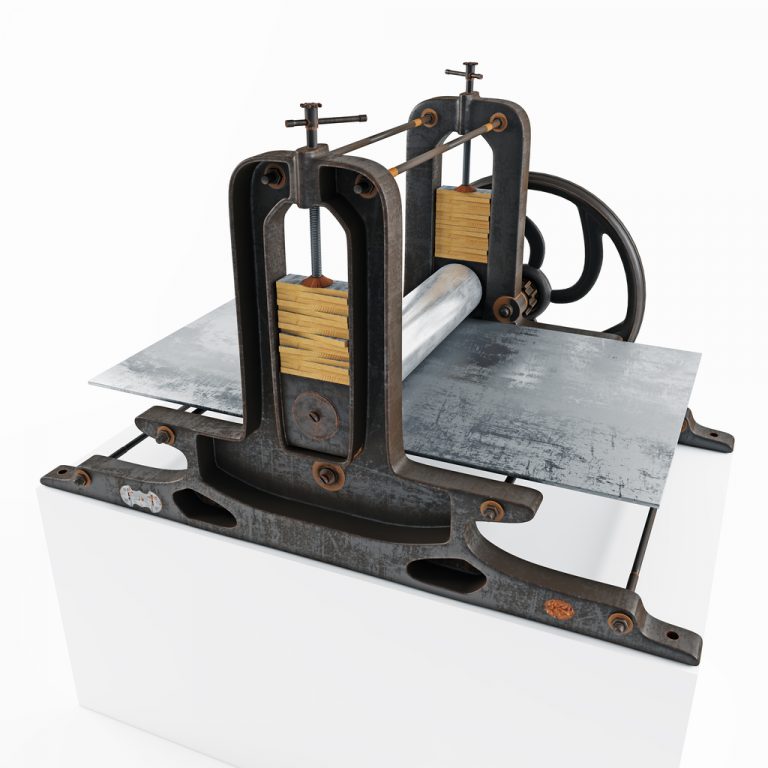While an etching press is the most important piece of equipment for etching, there is wide variation in the types of etching presses available, while the specific printmaking processes that you practise are also likely to influence your choice of press.
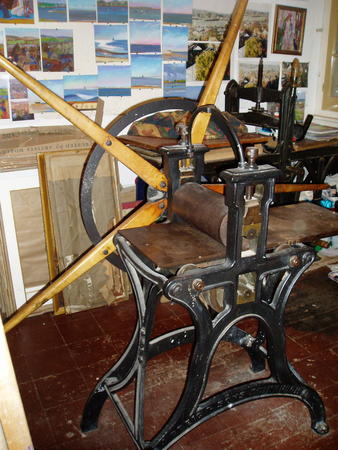
Firstly… what is an etching press?
The principle of an etching press is very simple: it comprises two hard rollers in contact with a flat hard bed. To operate the press, the user turns one of the rollers, by either a hand crank or a motor. This results in the rollers being pushed towards one another, thereby moving the bed between them. It is through this process that the bed is propelled from one end to the other.
A high level of pressure is required between the two rollers to push dampened paper into the recesses of the inked etching plate. This contact between the paper and plate pulls the ink out of the recesses and produces a print.
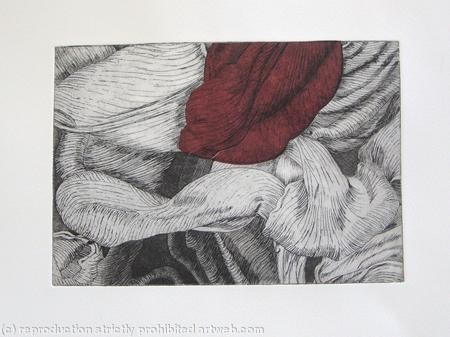
There’s a bit more to the basic setup of an etching press than this, not least a set of blankets that also goes between the rollers during the printing process, helping to ensure that pressure is distributed evenly across the plate.
But enough about all of that – what are the basic factors that you need to think about when you are looking to buy the perfect etching press?
Quality is vital when comparing etching presses
With so many etching presses on the market, encompassing the likes of geared, direct drive, cast and fabricated presses, the design and quality of your press will be crucial priorities.
You can help to ensure quality by purchasing from the right people – ideally, genuine and experienced printmakers who can provide you with support both before and after you buy.
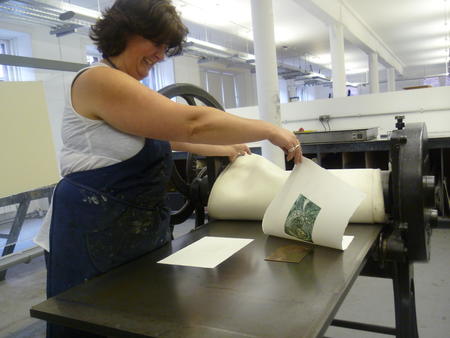
One of the big choices that you will need to make will be between a geared or direct drive press. About 50 years ago, geared presses were regarded as the best option on account of their weight and gears. However, with it having since been found that neither of these is necessary to produce remarkable prints, these days, you may be more likely to choose a direct drive model.
Such presses are very efficient and enable you to control the pressure you use, which enables you to produce exceptional prints without destroying your plates in the process. It should also be easy to set the pressure on your etching press, with no need for any spanners or gauges.
Should you opt for a traditional or modern etching press?
As aforementioned, ideas as to what constitutes the best etching press have changed somewhat down the years. While there’s no question that many more traditional etching presses can be beautiful to behold, their often very high price tags shouldn’t lead you to automatically expect better quality prints. Traditional etching presses can also be very hard to move and use and may lack versatility.
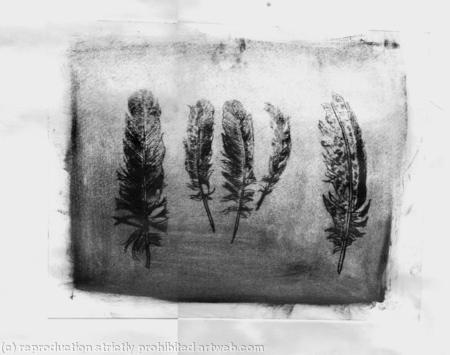
One school of thought that many printmakers cling onto, for example, is that rollers have to be heavy and solid to produce high-quality prints. This belief may have had some truth when presses were dependent on weight instead of pressure, but nowadays, presses are generally fabricated rather than cast. This means that rather than the heaviness or solidity of the rollers, what is now really important is the amount of pressure that can be exerted by the press.
Another disadvantage of choosing an older press may be an inability to produce the type of print you desire. Choose a modern direct drive press with a floating bed, and you will be able to produce a very wide range of prints with aplomb – bar a few exceptions, such as screen prints and lithography.
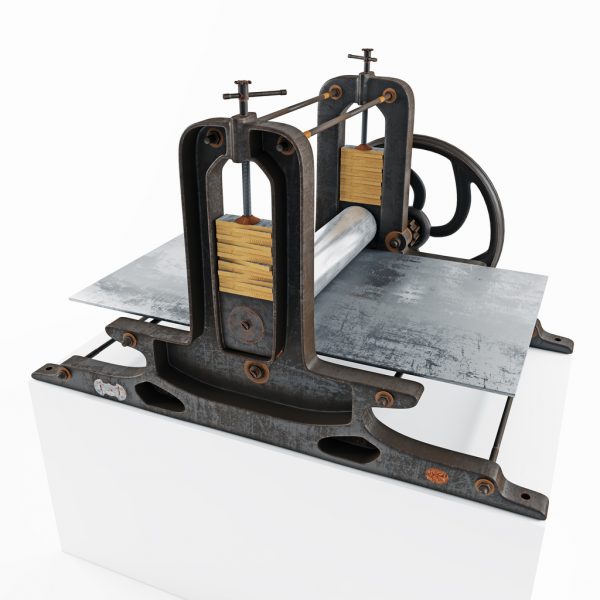
What else do you need to know when setting up your studio?
So, there you have it. While the range of etching presses available today is a dizzying one, by focusing on certain core aspects – such as quality, design, the rollers, the ease with which you will be able to adjust the pressure and the press’s ability to produce the type of print you want – you can maximise the likelihood of landing the perfect press for you.
Remember that we also have blog posts on various other aspects of printmaking, including the other basic steps of setting up your own printmaking studio and a useful guide to the sugar lift etching process.

